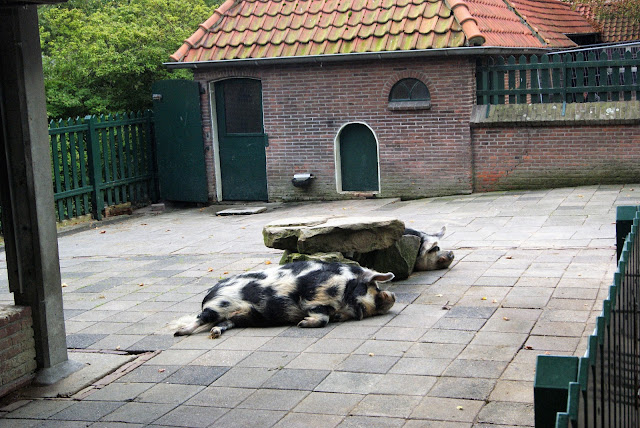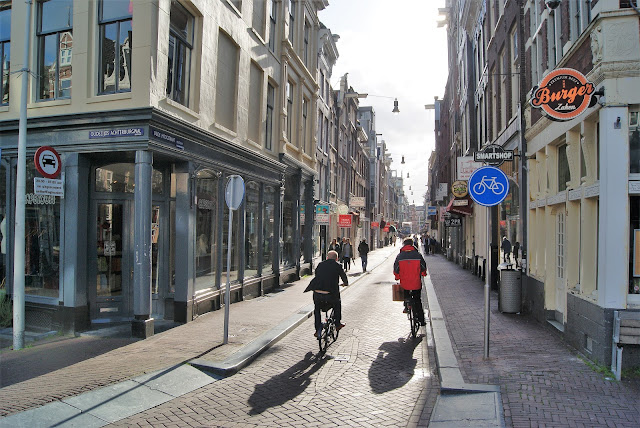Previously in Amsterdam Part 1 (https://weesertan.blogspot.com/2020/11/amsterdam-part-1.html#more) I travelled from Eindhoven to Amsterdam after a student competition, and joined a local walking tour.
First impression was actually quote positive
~~~
To know more about the Netherlands, we need to learn some history, and about the father of the nation - William of Orange. Also known as Prince William 1 and William the Silent, William of Orange led the 8-year war revolution against the Spanish king in the 1500's.
Before we start to wonder why is there a colour or fruit in his name, let me clear your queries. We do know that the Dutch football team also wear orange jersey.
Actually, there is a place call County of Orange, or Principality of Orange in Southern France. Wikipedia gives a good account of this place:
The the prince has his roots from there
Prince William of Orange did not like how Protestants were prosecuted by the Spanish King, and felt that the Dutch states should fight for freedom, against the Spanish colonizers
Since then, orange colour became a symbol for Protestantism, and Dutch heritage, Shades of orange can be found in the flags of the Netherlands, Republic of Ireland, New York City and etc. Prince William of Orange declared independence in 1581, denouncing the Spanish crown, and formed the Dutch Republic, a union of states in the Netherlands. It also kicked-started the Dutch Golden Age for the next 100 years, where the Dutch Republic was the world's no.1 superpower.
The Dutch sailed the world spreading art, culture and science. Military might saw them arriving in South East Asia, and defeated the Portuguese to take Malacca (modern day Melaka in Malaysia) in 1641. The Dutch Square (Red House) still stands in Melaka today, as one of the most famous tourist attraction. The Dutch is the longest colonial power that ruled Melaka - 183 years, until 1825. However, they preferred Batavia (modern day Jakarta, Indonesia) to Melaka, and had a land swap with the British.
I was sure the national maritime museum would have kept a lot of treasures
I was contented by just visiting the foyer of the impressive museum
The Dutch Republic was the worlds richest country from around 1600 - 1720, and the Amsterdam Exchange is touted as the worlds oldest stock exchange. It is thus unsurprising that Amsterdam, being the central of the past glory, is a modern day mixing pot of cultures.
Chinese temple
Rembrandt (1606-1669) is a world famous Dutch artist and painter. A square named after him - Rembrandtplein (Rembrandt square), where he once owned a house. His statue stands in the square (since 1852), while ne of his masterpiece - The Night Watch, was made into bronze structures in 2006, during his 400th birthday.
Rembrandt Square - A major tourist attraction
I also visited the NEMO Science Museum and ate Vietnamese noodles at the 7th floor cafeteria.
More climbing
Which offers a birds eye view of Amsterdam
Always fantastic to enjoy a city from high ground
The Tulip Mania in the 1600's was one of the most commodities bubble the world has witnessed. Tulips were brought to Europe from the Ottoman Empire in Turkey, along with pepper, tomato and etc.
At the peak in February 1637, some single tulip bulb was sold at 10 times the annual salary of a craftworker! Who would have thought that a flower could become so speculative, with its own Futures. Overnight the market crashed.
I think this is a timely reminder for all investors out there. Alan Greenspan once said in 2008:
Irrational exuberance is the psychological basis of a speculative bubble. I define a speculative bubble as a situation in which news of price increases spurs investor enthusiasm, which spreads by psychological contagion from person to person, in the process amplifying stories that might justify the price increases, and bringing in a larger and larger class of investors who, despite doubts about the real value of an investment, are drawn to it partly by envy of others' successes and partly through a gamblers' excitement.
Wikipedia has an interesting record:
Tulips today - Where they belong
The zoo
Dam Square - For much needed Vitamin D
Cycling is the main mode of transport, so the Dutch are generally super fit and healthy
Up next, I visit Amsterdam Arena, the home of Ajax Amsterdam, the football team that breeds talents, and the Begijnhof, courtyards from the Medieval Ages (1300's):















No comments:
Post a Comment